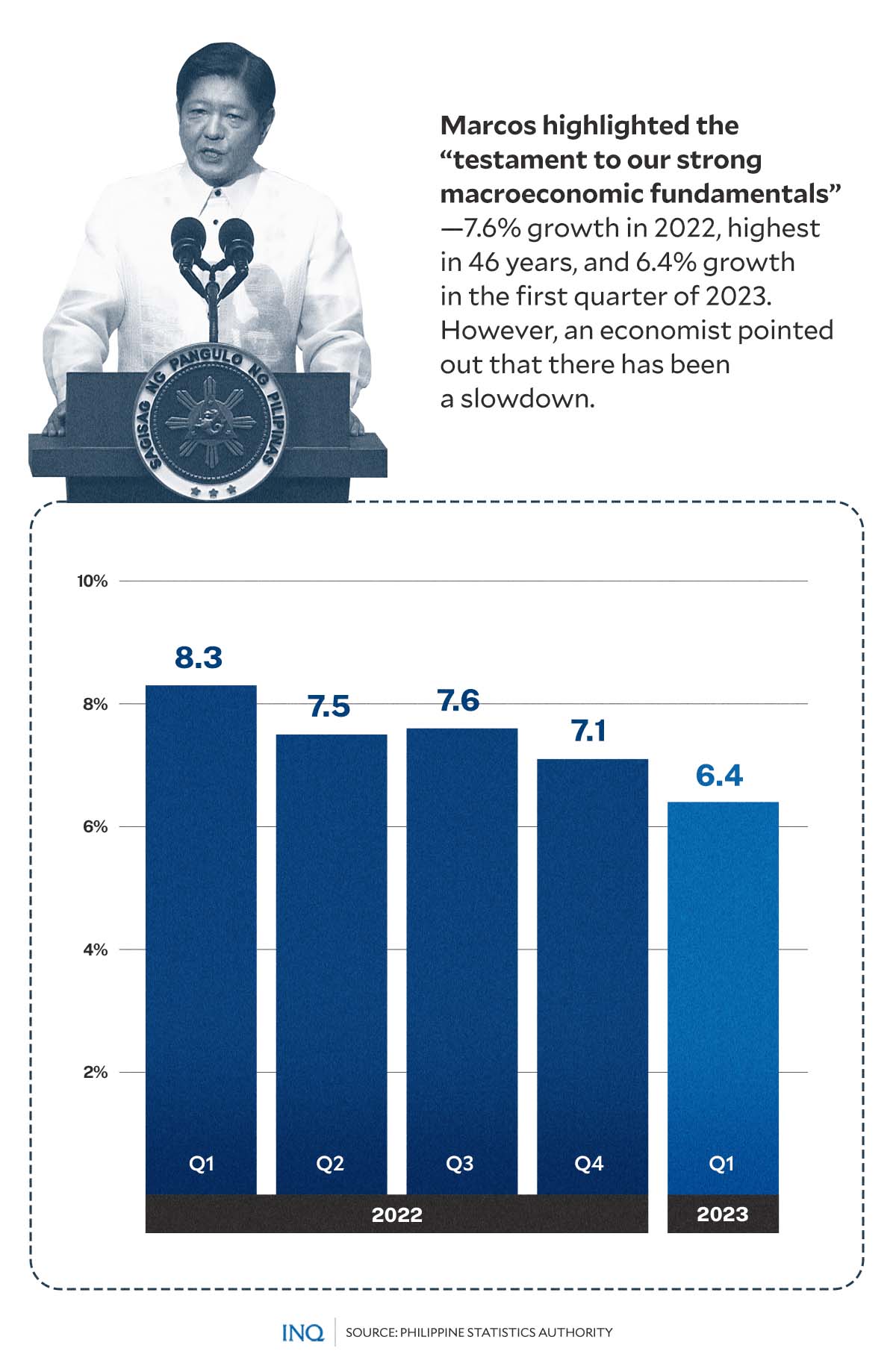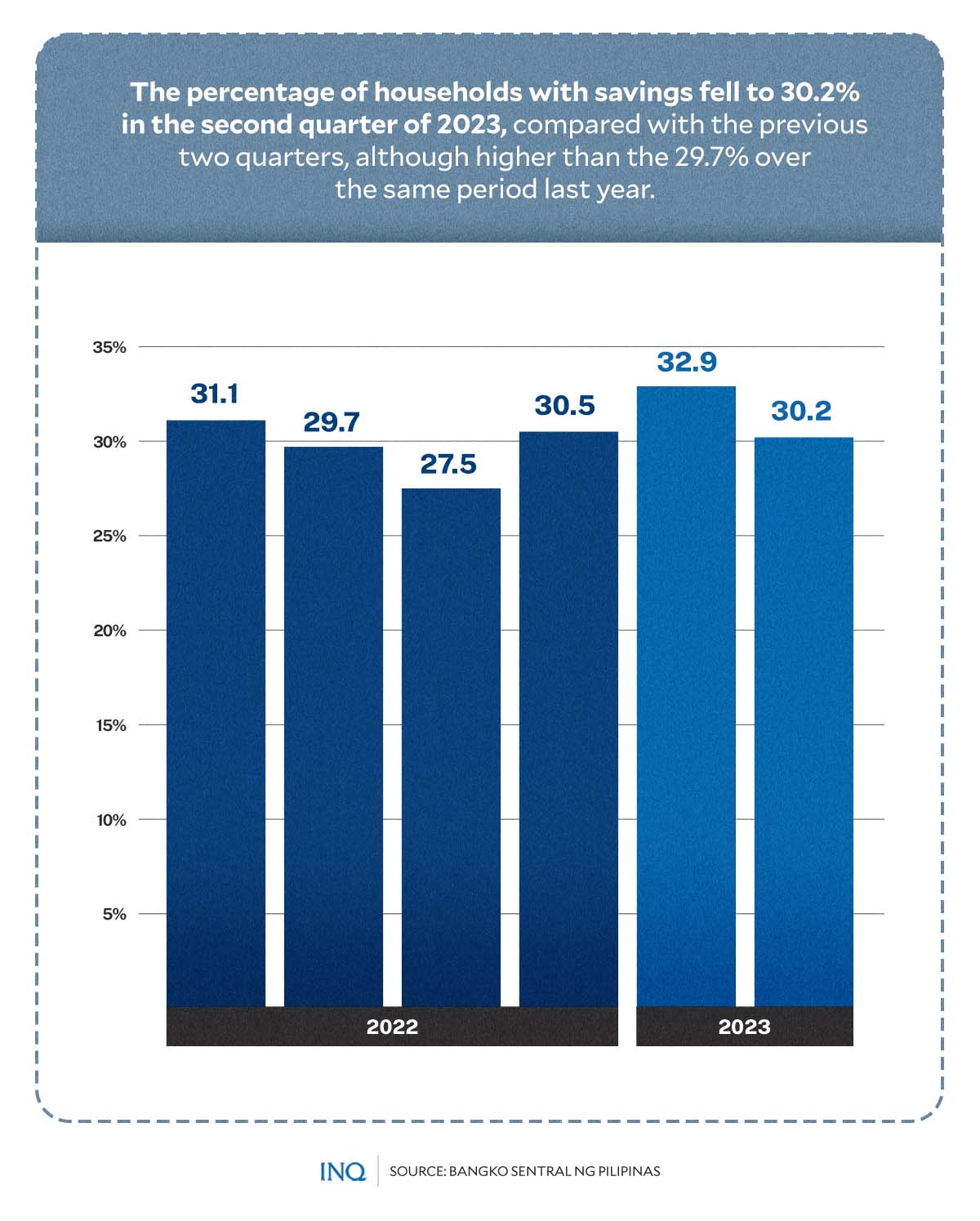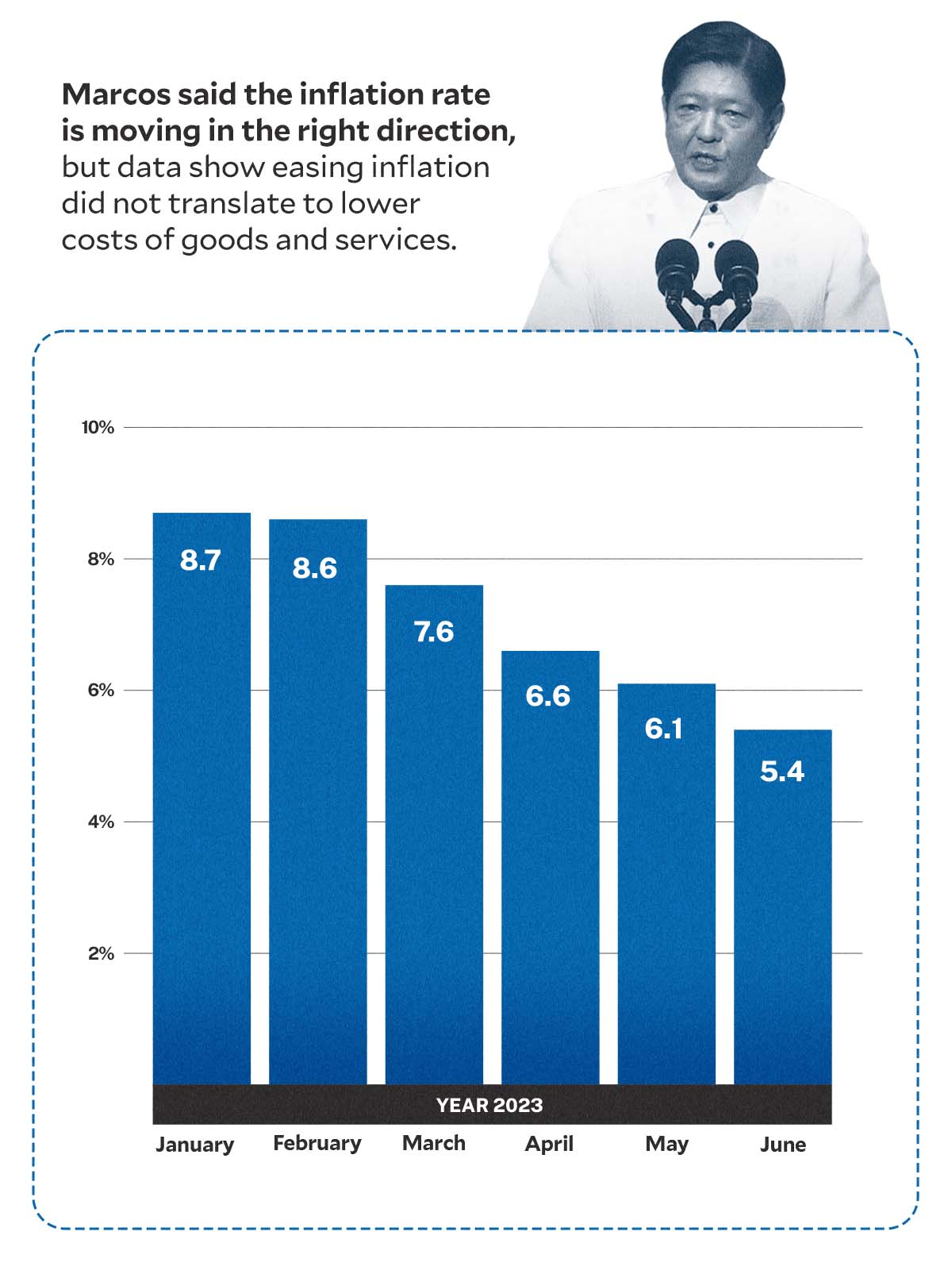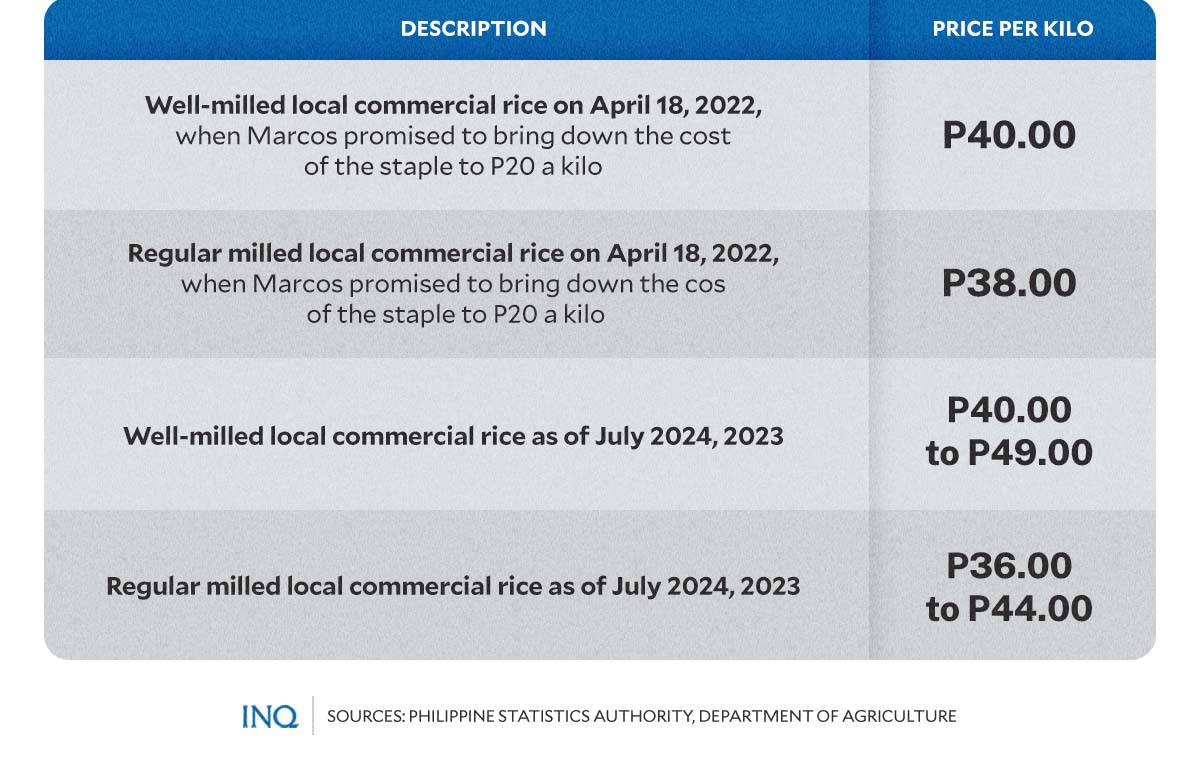‘Bagong Pilipinas’: How the new can emerge from the old
MANILA, Philippines—As President Ferdinand “Bongbong” Marcos Jr. spoke to the nation for his second State of the Nation Address on Monday (July 24), he reiterated his conviction that “the state of the nation is sound” and getting better.
“Dumating na po ang Bagong Pilipinas (A new Philippines has arrived),” Marcos said.
But Sonny Africa, executive director of the think tank Ibon Foundation, said Marcos’ second Sona—one hour and 10 minutes—“struggled to give even [the] flimsiest evidence of any progress.”
RELATED STORY: One standing ovation, over 60 rounds of applause mark 2nd Sona
Last week, Marcos said his “really very simple” speech will point out that “we have made significant progress” since he took office as the 17th president of the Republic of the Philippines.
Article continues after this advertisementHowever, Africa, an economist, said there was “backsliding” over the past year despite Marcos’ claim that the Philippines is still considered to be one of the fastest-growing economies in Asia and the world.
Article continues after this advertisementAs Africa told INQUIRER.net via FB Messenger, “the economy and conditions of the people are backsliding because there hasn’t been any real change in the policies that keep domestic agriculture, Filipino industry, and social services so inadequate.”
Let’s take a closer look.
‘Strong, stable economy’
Marcos highlighted in his second Sona the “testament to our strong macroeconomic fundamentals”—a 7.6 percent growth in 2022, the highest in 46 years, and 6.4 percent growth in the first quarter of 2023.
READ: FULL SPEECH: President Bongbong Marcos Sona 2023
But Africa pointed out that “growth has been slowing” since the start of the presidency of Marcos—from 7.5 percent in the second quarter of 2022 to 7.6 percent and 7.1 percent in the third and fourth quarters of last year, and 6.4 percent in the first quarter of 2023.
Looking back, Africa, who had reacted to the National Economic and Development Authority’s claim of a “resilient economy,” also said “economic growth is deceiving and only seems fast coming from such a low base.” Meaning if you’re coming from zero, any upward movement is high.
But Marcos still stressed the 6 percent overall growth rate projection by the World Bank.
“It is still within the range of our target for the year,” he said, pointing out that it is anchored on strong local demand, which is backed by consumer spending and strengthened by these:
- BPO industry
- Steady flow of remittances
- Continuing jobs recovery
Living on diskarte
Africa, however, pointed to what he said as a “diskarte economy,” where millions of Filipinos, especially the poorest of the poor, “can’t afford to be jobless so they’re creating jobs for themselves.”
Based on Philippine Statistics Authority (PSA) data, there were only 2.17 million jobless Filipinos in May 2023, slightly lower than the 2.93 million in May 2022. Over the same period, the number of employed improved, too, from 46.08 million to 48.26 million.
RELATED STORY: Sona report card: Hits, misses from Bongbong Marcos’ 2022 promises
However, Ibon Foundation said “hyping higher employment and lower unemployment is misleading because the quality of work is worse,” pointing out that “the economy isn’t generating quality jobs because its fundamentals are failing.”
It said based on June 2022 and May 2023 PSA data, full-time employment fell to 30.4 million, or by 127,000, while part-time work increased to 17.1 million, or by 1.4 million, aside from 361,000 more “with a job, not at work.”
On “increased employment,” Ibon Foundation said most were just self-employment and outright informal work, which increased by 1.8 million to 21.7 million, or almost half of total employment.
“This informal work includes a huge 684,000 increase in unpaid family workers to 4.4 million,” the think tank said as it lamented why they are still considered by the government as “employed.”
Marcos said in his speech that the government has to “do more.”
READ: Present ‘battle plan’ for nation in Sona, lawmakers tell Marcos
Without savings
“Earnings have worsened, too,” Ibon Foundation said.
Last year, the minimum wage in Metro Manila, the highest in the Philippines, was raised by P33 by the Regional Tripartite Wages and Productivity Board which brought the new minimum pay to P570 from P537 per day.
Over a year later, the minimum wage was raised by P40, or 7 percent, with the Metro Manila wage board saying that private sector workers will receive P610 a day. This is still “not enough,” though.
But a closer look would show that the insufficiency of the P40-increase is not the only problem because in reality, millions of Filipino workers, who are engaged in informal or low-paying jobs, will not even benefit from it.
Based on Bangko Sentral ng Pilipinas data, the percentage of households with savings fell to 30.2 percent in the second quarter of 2023 from 32.9 percent in the first quarter of the year. There were 30.5 percent households with savings in the last quarter of 2022.
Food, services still out of reach
The numbers emerge in the background of rising prices of basic commodities, which was dismissed by Marcos when he stressed in his speech that “inflation rate is moving in the right direction […] we are stabilizing the prices of all critical commodities.”
READ: Bongbong Marcos Sona opening: Rampant inflation plagued PH
“From 8.7 percent in January, our inflation has continued to ease up in all regions, settling now at 5.4 percent for June. What this means is that in spite of all the difficulties, we are transforming the economy,” he said.
But an ease in inflation does not mean that goods and services are getting cheaper.
RELATED STORY: Effect of lower inflation rates on the poor downplayed
Looking back, Marcos promised to bring down the price of rice to P20 a kilo on April 18, 2022, when well-milled local commercial rice was worth P40 a kilo. Now, based on Department of Agriculture data, a kilo is worth P36 to P44.
READ: A year into Bongbong Marcos’ rule: P20/kg rice becomes a conundrum
Marcos said in his speech that the government is working especially to strengthen “our people’s capabilities so they can improve their lives.” This, he said, is well-stated in the Philippine Development Plan 2023-2028.
Africa said “the economy can’t be transformed if economic policies aren’t transformed,” expressing concern on how it is “business as usual for the administration, which isn’t doing anything different from those before it.”
“If anything, its misguided fiscal conservatism is even getting in the way of immediately helping millions of Filipinos in increasingly desperate circumstances,” said Africa.
RELATED STORY: Bongbong Marcos’ 1st Sona: Inheriting Duterte problems, plotting solutions





